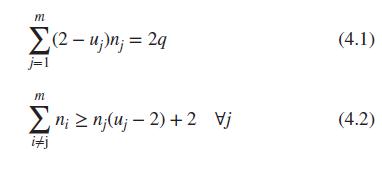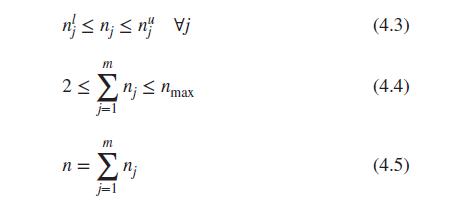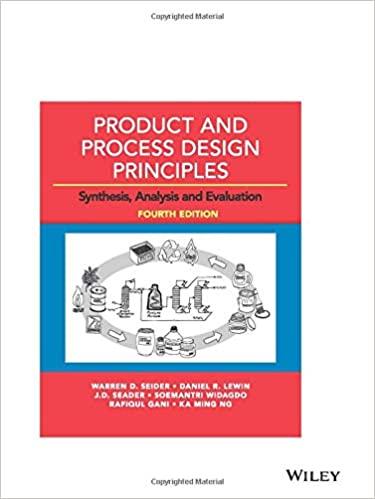Given the basis sets of groups Set- (1left{mathrm{CH}_{3} ; mathrm{CH}_{2} ; mathrm{CH} ; mathrm{C} ight} ;) Set-
Question:
Given the basis sets of groups Set- \(1\left\{\mathrm{CH}_{3} ; \mathrm{CH}_{2} ; \mathrm{CH} ; \mathrm{C}\right\} ;\) Set- \(2\left\{\mathrm{OH} ; \mathrm{CH}_{3} \mathrm{CO} ; \mathrm{CH}_{3} \mathrm{O} ; \mathrm{CH}_{2} \mathrm{CO}, \mathrm{CH}_{2} \mathrm{O}\right\}\), how many chemically feasible molecules can be generated [satisfying Eqs. (4.1)-(4.5)] with a minimum of two groups and a maximum of four groups and any number of groups from Set-1, but a maximum of one group from Set-2? If there were no restrictions, how many structures could be generated?
Data From Eqs. 4.1 - 4.5:-


Fantastic news! We've Found the answer you've been seeking!
Step by Step Answer:
Related Book For 

Product And Process Design Principles Synthesis Analysis And Evaluation
ISBN: 9781119355243
4th Edition
Authors: Warren D. Seider, Daniel R. Lewin, J. D. Seader, Soemantri Widagdo, Rafiqul Gani, Ka Ming Ng
Question Posted:





